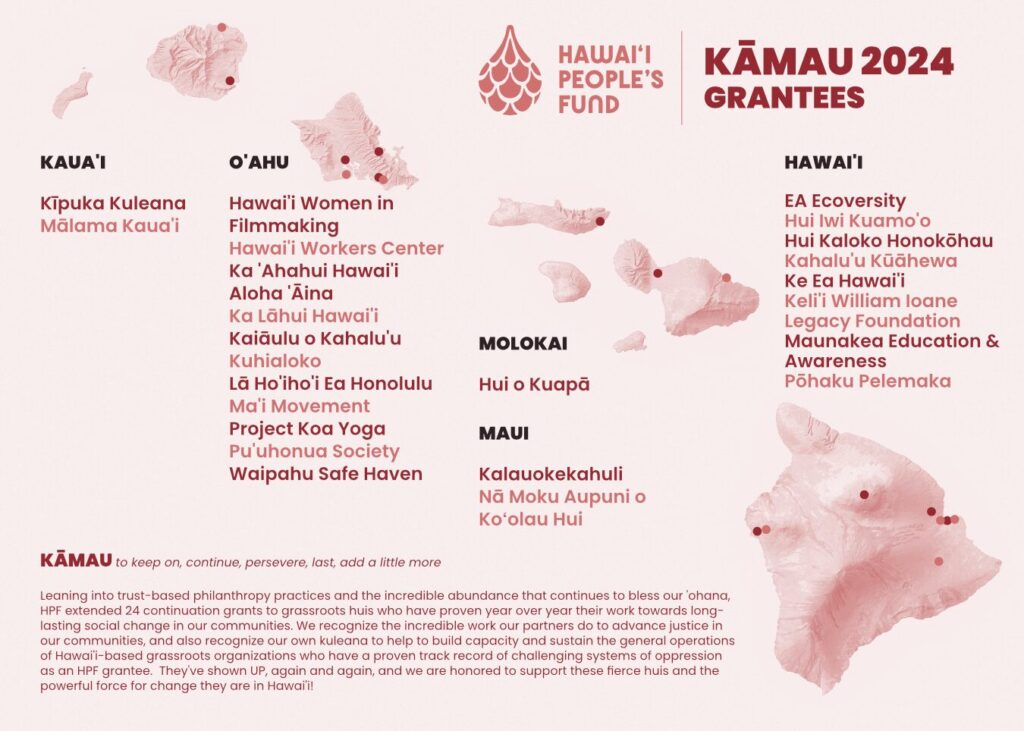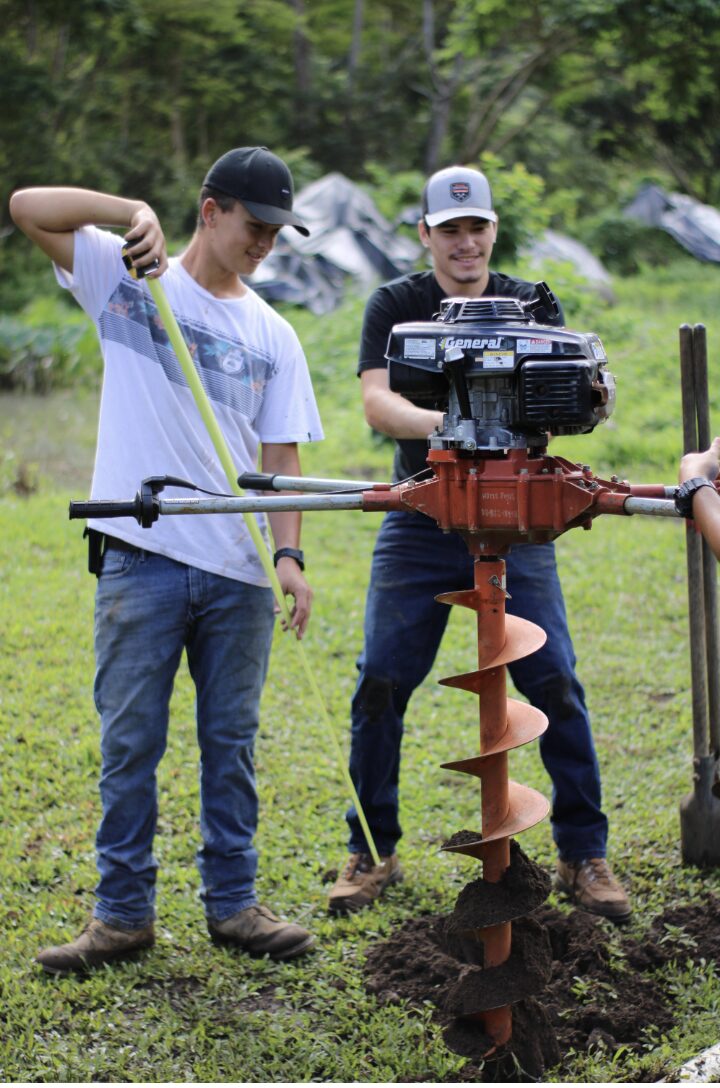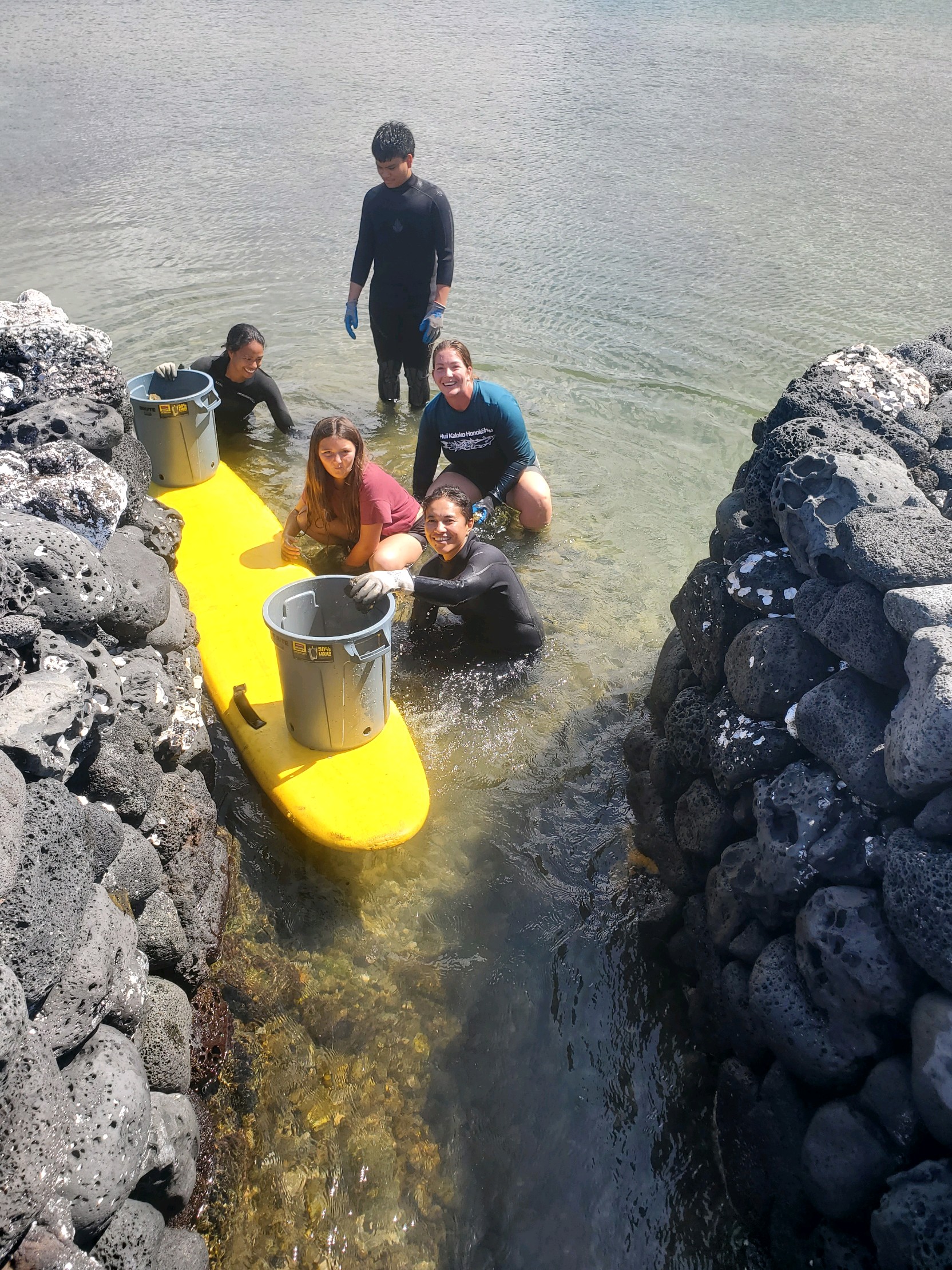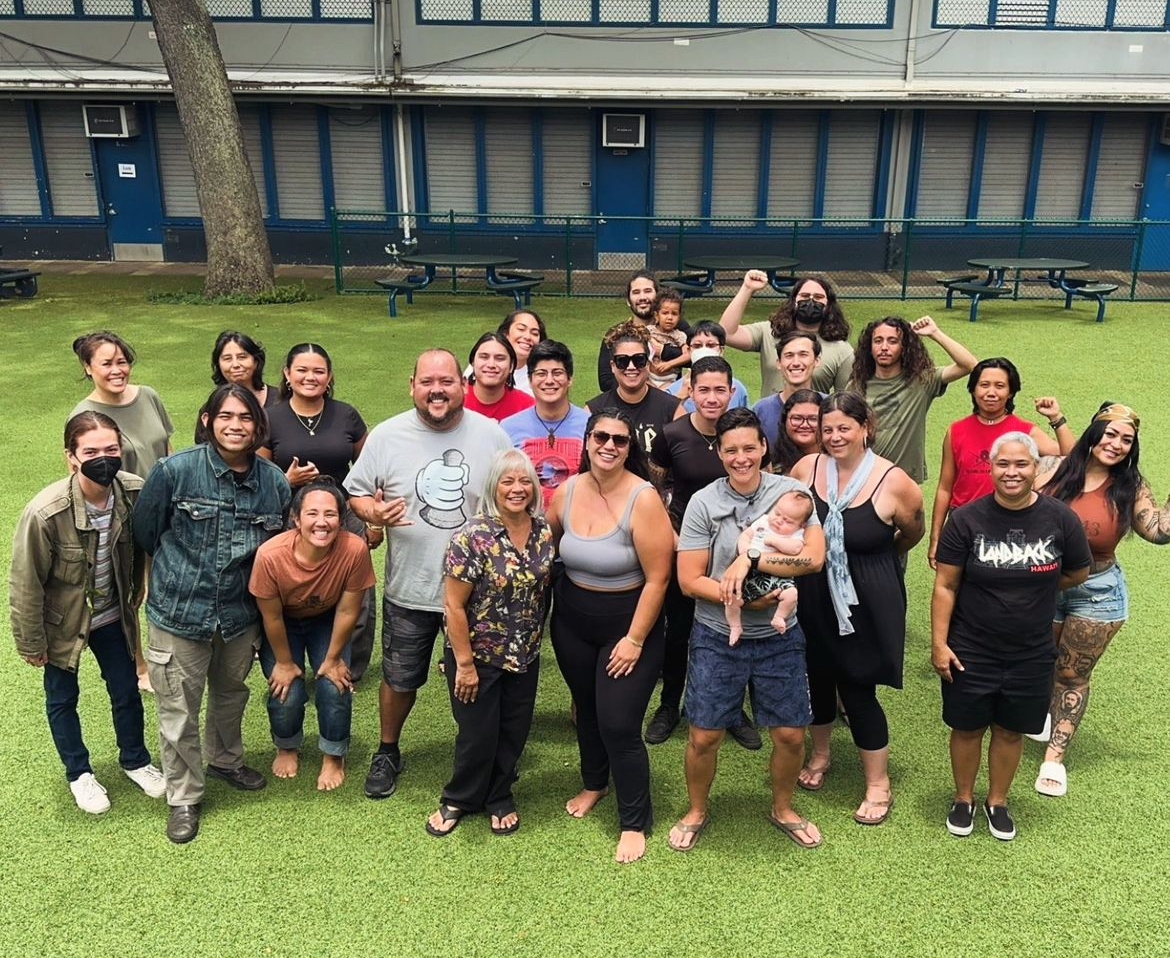
Grantmaking
Kāmau
to keep on, continue, persevere, last, add a little more
Leaning into trust-based philanthropy practices and the incredible abundance that continues to bless our ʻohana, HPF extended 24 continuation grants to grassroots huis who have proven year over year their work towards long-lasting social change in our communities. We recognize the incredible work our partners do to advance justice in our communities, and also recognize our own kuleana to help to build capacity and sustain the general operations of Hawaiʻi-based grassroots organizations who have a proven track record of challenging systems of oppression as an HPF grantee. Theyʻve shown UP, again and again, and we are honored to support these fierce huis and the powerful force for change they are in Hawaiʻi!

Kāmau Grantees
-

EA Ecoversity
EA Ecoversity provides culturally-driven learning, training, credentialing, and long-term societal benefits to ka lāhui Hawaiʻi. EA hosts an independent Hawaiian culture-based post-secondary education and career training program, headquartered on rural Hawaiʻi Island, providing blended online and offline learning in an atmosphere of aloha.
Read more: EA EcoversityEA Ecoversity provides culturally-driven learning, training, credentialing, and long-term societal benefits to ka lāhui Hawaiʻi. EA hosts an independent Hawaiian culture-based post-secondary education and career training program, headquartered on rural Hawaiʻi Island, providing blended online and offline learning in an atmosphere of aloha. kuakanaka.com/eaecoversity
-

Hawai’i Women in Filmmaking
Hawaiʻi Women in Filmmaking advocates for women and girls (cis/trans), femmes, non-binary, gender-fluid and gender-queer to tell their stories through film with an intersectional lens.
Read more: Hawai’i Women in FilmmakingHawaiʻi Women in Filmmaking advocates for women and girls (cis/trans), femmes, non-binary, gender-fluid and gender-queer to tell their stories through film with an intersectional lens. hawaiiwomeninfilmmaking.org
-

Hawai’i Workers Center
Hawaiʻi Workers Center envisions a Hawaiʻi where all workers are empowered to exercise their rights to organize for their social, economic and political wellbeing.
Read more: Hawai’i Workers CenterHawaiʻi Workers Center envisions a Hawaiʻi where all workers are empowered to exercise their rights to organize for their social, economic and political wellbeing. hawaiiworkerscenter.org
-

Hui Iwi Kuamo’o
Hui Iwi Kuamoʻo actively restores and maintains the Native Hawaiian ancestral foundation by assisting families to resume the kuleana (duty, responsibility) to care for the ancestors.
Read more: Hui Iwi Kuamo’oHui Iwi Kuamoʻo actively restores and maintains the Native Hawaiian ancestral foundation by assisting families to resume the kuleana (duty, responsibility) to care for the ancestors. huiiwikuamoo.com
-

Hui Kaloko Honokōhau
Hui Kaloko-Honokōhau is dedicated to protecting, preserving, and advancing the natural and cultural resources of Kaloko and the customary and traditional practices of Native Hawaiians of the area.
Read more: Hui Kaloko HonokōhauHui Kaloko-Honokōhau is dedicated to protecting, preserving, and advancing the natural and cultural resources of Kaloko and the customary and traditional practices of Native Hawaiians of the area. huikalokohonokohau.org
-

Hui o Kuapā
Hui o Kuapā educates local and global communities about Native Hawaiian biocultural resource management through the restoration, use, and maintenance of Molokaiʻs loko iʻa (traditional Hawaiian fishponds) and their adjacent lands.
Read more: Hui o KuapāHui o Kuapā educates local and global communities about Native Hawaiian biocultural resource management through the restoration, use, and maintenance of Molokaiʻs loko iʻa (traditional Hawaiian fishponds) and their adjacent lands. huiokuapa.org
-

Ka ‘Ahahui Hawai’i Aloha ‘Āina
Reactivated in 2016 from its original formation circa 1893, Ka ʻAhahui Hawaiʻi Aloha ʻĀina (Hui Aloha ʻĀina) exists for the expressed purpose of perpetuating Hawaiian national identity, the development of a Hawaiian national consciousness, and the restoration of Hawaiian national independence. Hui Aloha ʻĀina has branches on all major islands, is entirely volunteer driven, is a multigenerational combination of veterans of the Hawaiian sovereignty movement, students, parents, labor organizers, workers, academics, and kuaʻāina alike.
The hui is in the planning stage of the Aloha ʻĀina Demilitarization Summit: Cease the Lease, with a specific focus on campaigning against the 2029 u.s. military lease renewals of approximately 47,000 acres of Hawaiian land. The summit seeks to assemble a coalition of activists and organizers engaging in the struggle against the ongoing cultural and environmental desecration at occupied u.s. military facilities such as Mākua Valley, Pōhakuloa Training Area, and others.
Read more: Ka ‘Ahahui Hawai’i Aloha ‘ĀinaReactivated in 2016 from its original formation circa 1893, Ka ʻAhahui Hawaiʻi Aloha ʻĀina (Hui Aloha ʻĀina) exists for the expressed purpose of perpetuating Hawaiian national identity, the development of a Hawaiian national consciousness, and the restoration of Hawaiian national independence. Hui Aloha ʻĀina has branches on all major islands, is entirely volunteer driven, is a multigenerational…
-

Ka Lāhui Hawai’i
Ka Lāhui Hawaiʻi is a native initiative for self-determination and self-governance formed by and for Kanaka Maoli dedicated to affirming and defending Hawaiian rights.
Read more: Ka Lāhui Hawai’iKa Lāhui Hawaiʻi is a native initiative for self-determination and self-governance formed by and for Kanaka Maoli dedicated to affirming and defending Hawaiian rights. kalahuihawaii.net
-

Kahalu’u Kūāhewa
Kahalu’u Kūāhewa is restoring an ancient traditional agricultural field system in Kona ma uka to perpetuate ancestral knowledge reconnecting kanaka (people) to ʻāina (land) through indigenous grassroots initiatives and sustainable restorative agricultural practices.
Read more: Kahalu’u KūāhewaKahalu’u Kūāhewa is restoring an ancient traditional agricultural field system in Kona ma uka to perpetuate ancestral knowledge reconnecting kanaka (people) to ʻāina (land) through indigenous grassroots initiatives and sustainable restorative agricultural practices. kahaluukuahewa.org